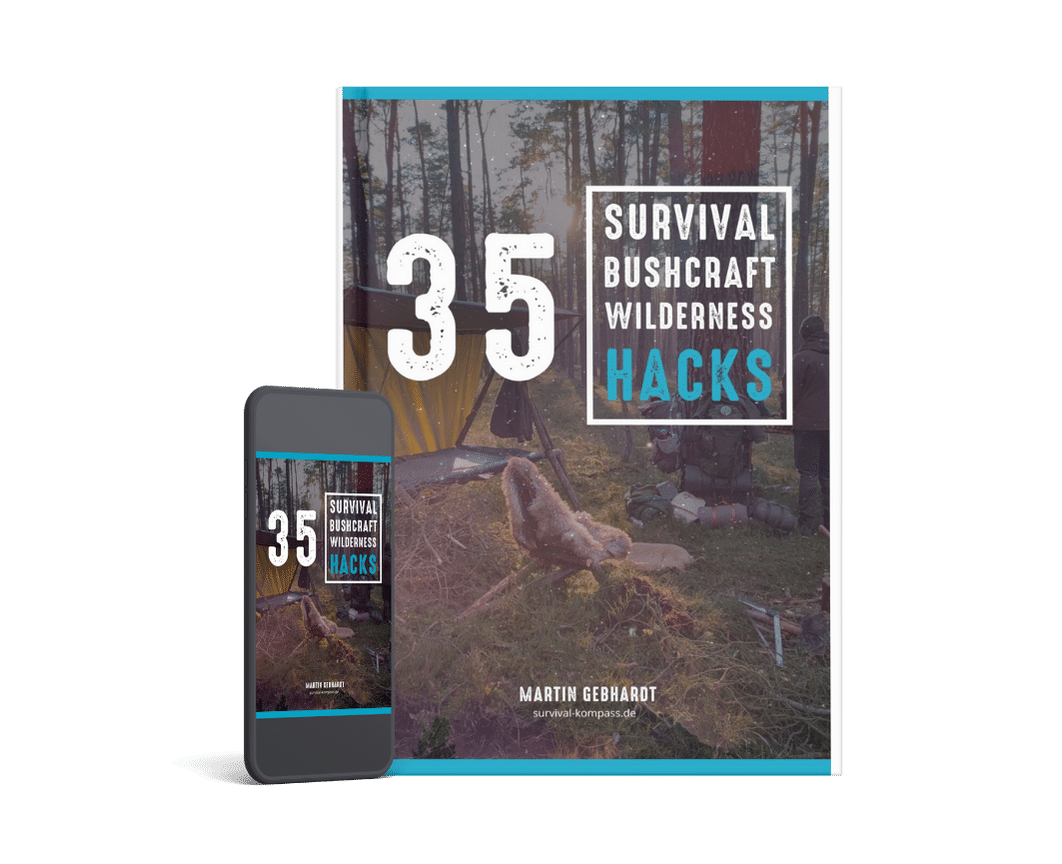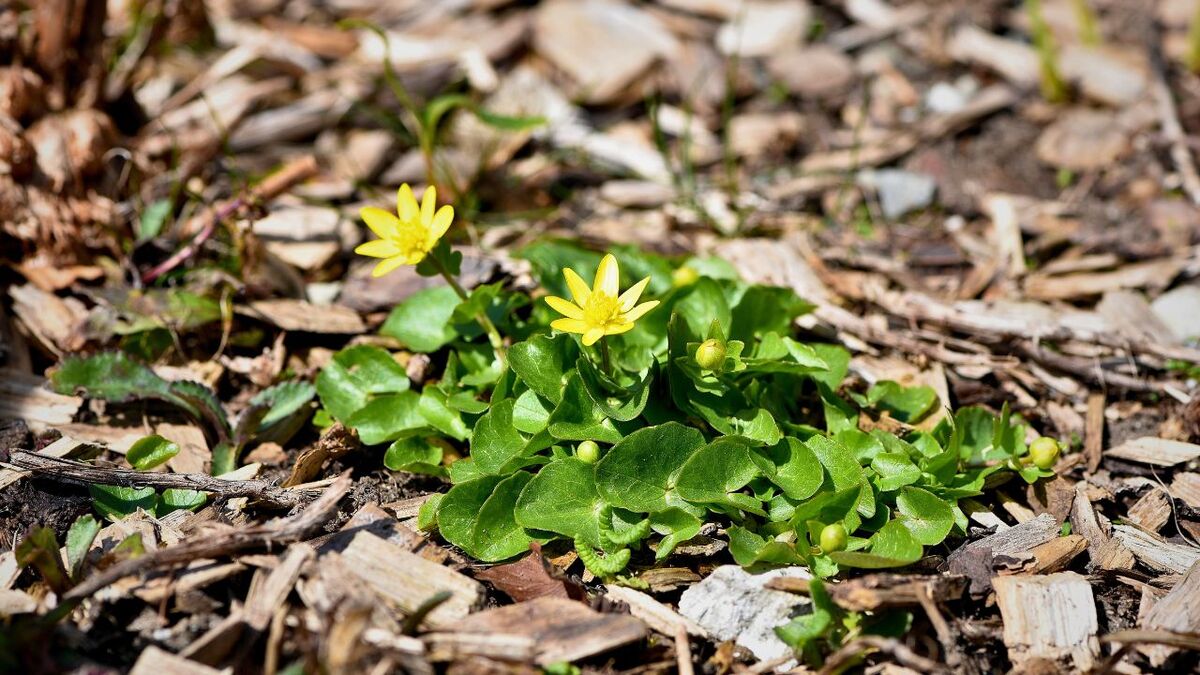
Lesser celandine - Your survival vitamin boost in spring (but beware)
👉 The key facts from this guide
- The Lesser celandine is one of the first edible wild herbs in spring – a real vitamin C boost after winter!
- You can recognize it by its heart-shaped, glossy leaves – but only harvest before it blooms!
- As soon as the yellow flowers appear, the plant becomes poisonous – then it's better to just look at it, not eat it.
- You can eat the young leaves raw in small amounts, like in a salad, or enjoy them gently steamed.
- In quark or on home-baked bread, the Lesser celandine also makes a great aromatic spring snack.
Spring is here! The first warm rays of sunshine tickle the nose, and life awakens in the forest.
Currently, when the stomach craves fresh greens after a long winter and nature seems to still be asleep, a little hero rolls out its green carpet: the Lesser celandine!
Perhaps you know these shiny, heart-shaped leaves that often cover entire riverbanks or open forest areas.
You are one of the first splashes of color after the gray of winter. But this inconspicuous little plant is much more than just pretty to look at – it is a true survival powerhouse and a forgotten bushcraft secret.
The vitamin C Kick from the Stone Age (Okay, almost!)
Imagine you are on your way after a long, barren winter. Your energy reserves are low, fresh vegetables are in short supply.
Exactly here is where our little green friend comes into play. In German, the name "Scharbockskraut" is not without reason: "Scharbock" is an old word for scurvy, the dreaded vitamin C deficiency disease.
Sailors and people from earlier times knew: These leaves are packed with vitamin C – exactly what the body urgently needs after winter.
In a survival context, it's worth its weight in gold! If you're out in the spring and require an energy boost, a small handful of Lesser celandine (thoroughly prepared, more on that shortly!) can be just what you need to strengthen your defenses.
The little powerhouse in detail: How to recognize the lesser celandine (Ficaria verna)
Before we take a look at how this little harbinger of spring can enrich your survival kitchen, let's take a closer look.
Botanically, the buttercup belongs to the family of buttercups – a family that can sometimes be tricky, so careful observation is a must!
You can find Ficaria verna, as it is scientifically called, mostly in moist, nutrient-rich soils. Look out for it in light deciduous forests, floodplain forests, along stream banks, or even in your own garden if it is not too dry.
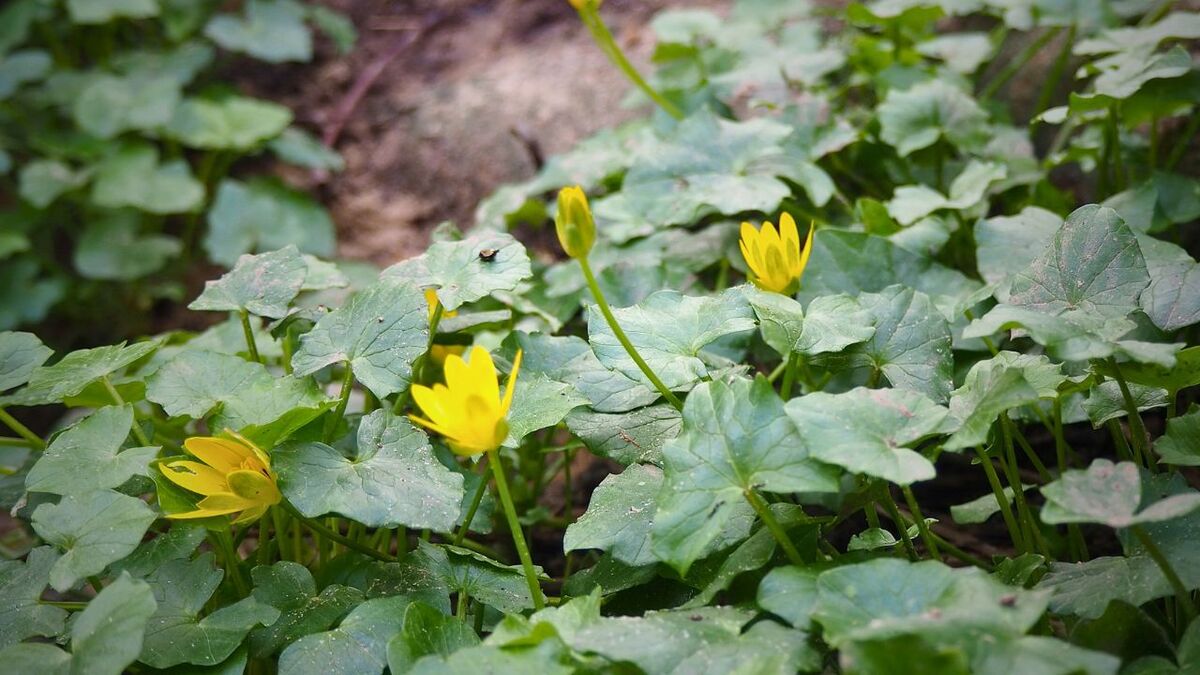
What makes it so special? It often grows in dense, flat carpets right on the ground.
The leaves are the trademark:
- They are round to heart-shaped, sit on long stems, and typically lean towards the ground.
- The leaf margin is usually smooth or only very slightly serrated.
- But the most striking feature is this incredible, greasy shine! No wonder they are affectionately called "Glitzeri" in Switzerland – the leaves and later the flowers look freshly varnished.
When the bright golden-yellow flowers with their 8–11 petals appear in March, the carpet is perfect – but for us collectors, unfortunately, the harvest is then over, more on that shortly!
By the way: The lesser celandine is perennial and survives with tubers in the soil. For reproduction, it additionally forms tiny bulbils in the leaf axils after flowering, which then fall off and provide for new little plants – quite clever, isn't it?
Keep your eyes open when collecting: Don't underestimate the risk of confusion!
Okay, the shiny little hearts sound simple, but just before the distinct yellow flowers are there, caution is advised.
As with all wild plants, the rule is: Only collect what you can identify with 1000% certainty! There are a few candidates that may resemble the buttercup in the leaf stage:
-
Ground-ivy (Glechoma hederacea), non-toxic: Often grows in similar locations. The most important difference: The leaves of ground-ivy are not smooth at the edge, but notched (like with small teeth) and often slightly hairy. Additionally, they emit a strong, aromatic smell when crushed (some say minty, others more spicy). Fortunately, ground-ivy is also non-toxic and edible, but tastes quite different.
-
Speedwell species (Veronica spp.), non-toxic: Here too, you typically find notched leaf edges, which distinguishes them from the mostly smooth-edged buttercup. The leaf shape can vary, but is rarely so distinctly heart-shaped and shiny.
-
Garlic mustard (Alliaria petiolata), non-toxic: Young leaves may resemble it, but are mostly duller, and the leaf veins look different. The absolute test: Crushed leaves smell like garlic. A great wild herb, but not buttercup. Read everything about garlic mustard here.
-
Wild ginger (Asarum europaeum), slightly toxic: This plant is slightly toxic and should definitely not end up in a salad! The leaves are also roundish-kidney-shaped to heart-shaped and shiny, but are usually significantly larger (often 3–6 cm wide) than those of buttercup and feel more leathery. It also regularly grows in smaller groups instead of dense carpets.
Take your time, look closely, compare the leaf edges, the surface (shiny vs. matte/furry), the size, and if in doubt: smell test (ground elder, Garlic Mustard)! Does your gut feeling say "uncertain"? Then leave the plant alone!
Only the leaves, please! How and when to properly harvest Lesser celandine
Now it gets practical! From the buttercup we use exclusively the fresh, young leaves – and only BEFORE the flowering, that is, from February to April, depending on the weather. As soon as the yellow flower stars appear, it's: Hands off!
The good news: You don't even need scissors or a knife. The long, soft leaf stems can be easily plucked with your fingers right above the ground. Take only as much as you really need – think of nature and other foragers.
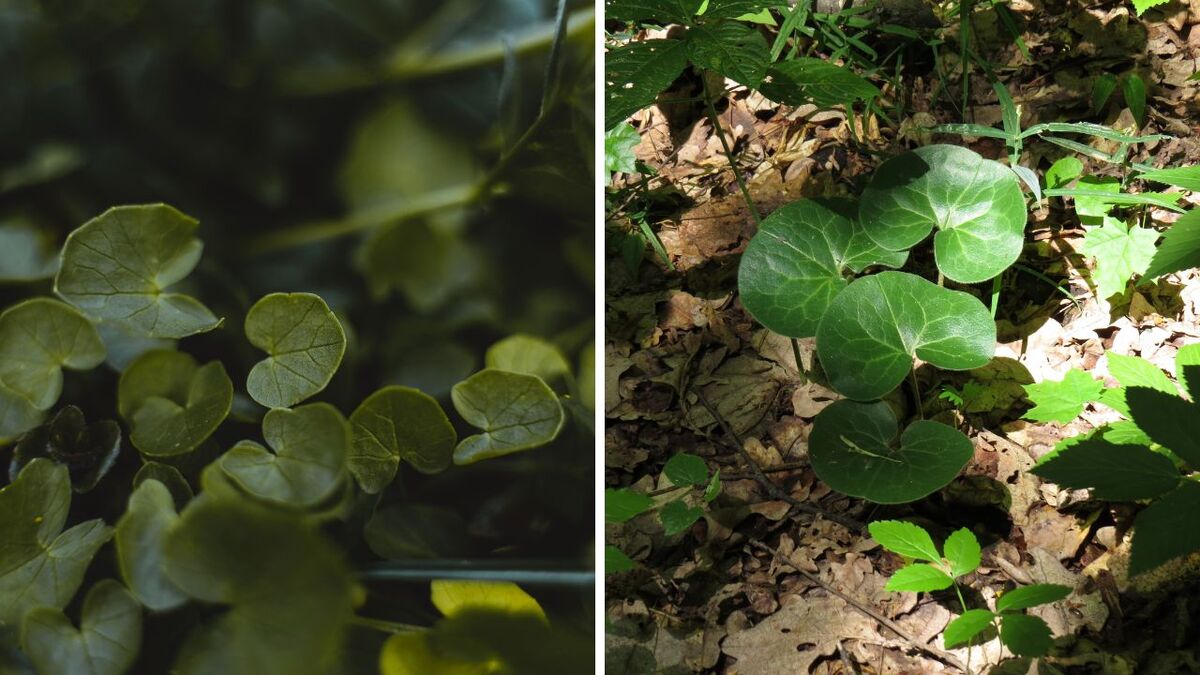
Once home, you should wash the leaves thoroughly, as they often grow close to the ground and can be sandy accordingly.
They taste best when they are completely fresh. If you need to store them: Wrap them in a damp cloth and place them in the vegetable compartment of your refrigerator. This way, they may last 1 to a maximum of 3 days – but fresh is definitely better for the vitamin kick!
How do you use the buttercup (before it blooms!)?
If you have collected the young, tender leaves before the bloom, you have a fresh, slightly spicy to mild taste in front of you.
- Raw in the survival salad: A small handful of young leaves can be mixed raw as a vitamin booster in a wild herb salad. But don't overdo it – start with small amounts to see how your body reacts. Remember: Your stomach may not be used to so much "wild" anymore.
- Steamed like spinach: Briefly steamed in a little water or fat, the leaves lose some of their sharpness and become more digestible. This is often the safer option, especially if you want to use larger quantities (which is rarely necessary).
- In bushcraft herb quark: Finely chopped and mixed into quark or cream cheese, it provides a fresh, spicy flavor – perfect with your self-baked ember bread (see my campfire guide!).
Important: Even before flowering, the leaves contain small amounts of irritating substances. Never eat large quantities at once! It is an emergency food or a healthy supplement, not a main dish.
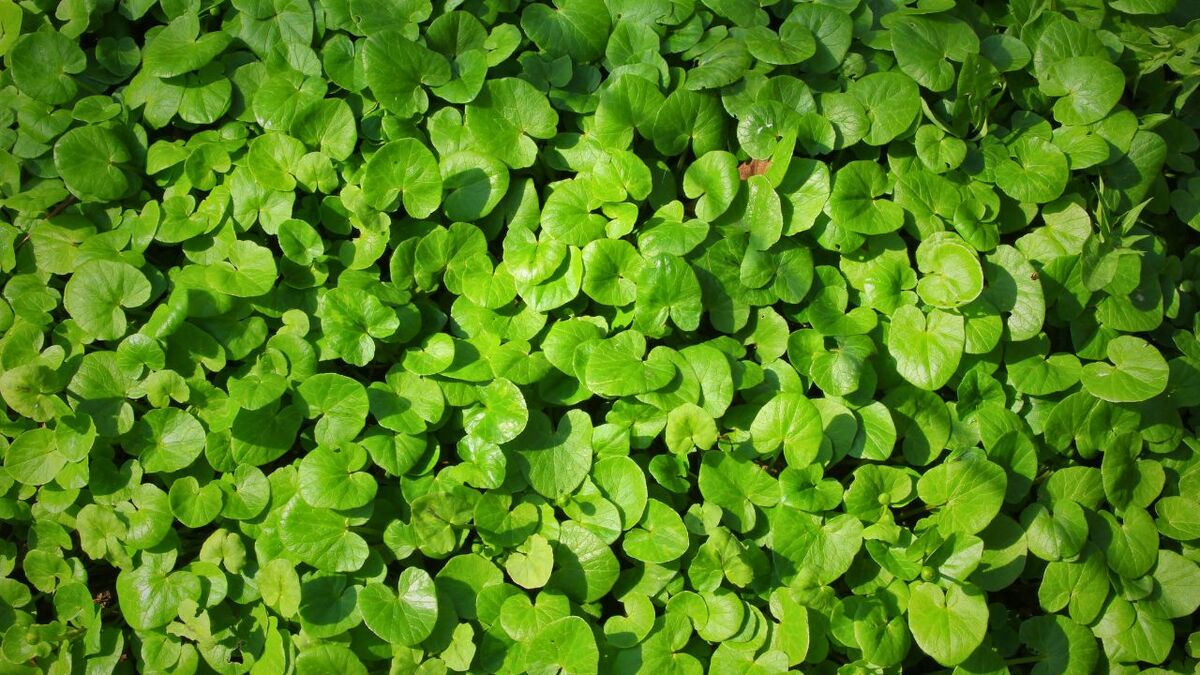
Bushcraft is knowledge, not just doing
The buttercup teaches us an essential lesson in bushcraft and survival: observation skills and knowledge of the cycles of nature are vital for survival.
Knowing when a plant is safe and when it is not just as crucial as making fire or being able to build a shelter. It sharpens your eye for details and your connection to the environment.
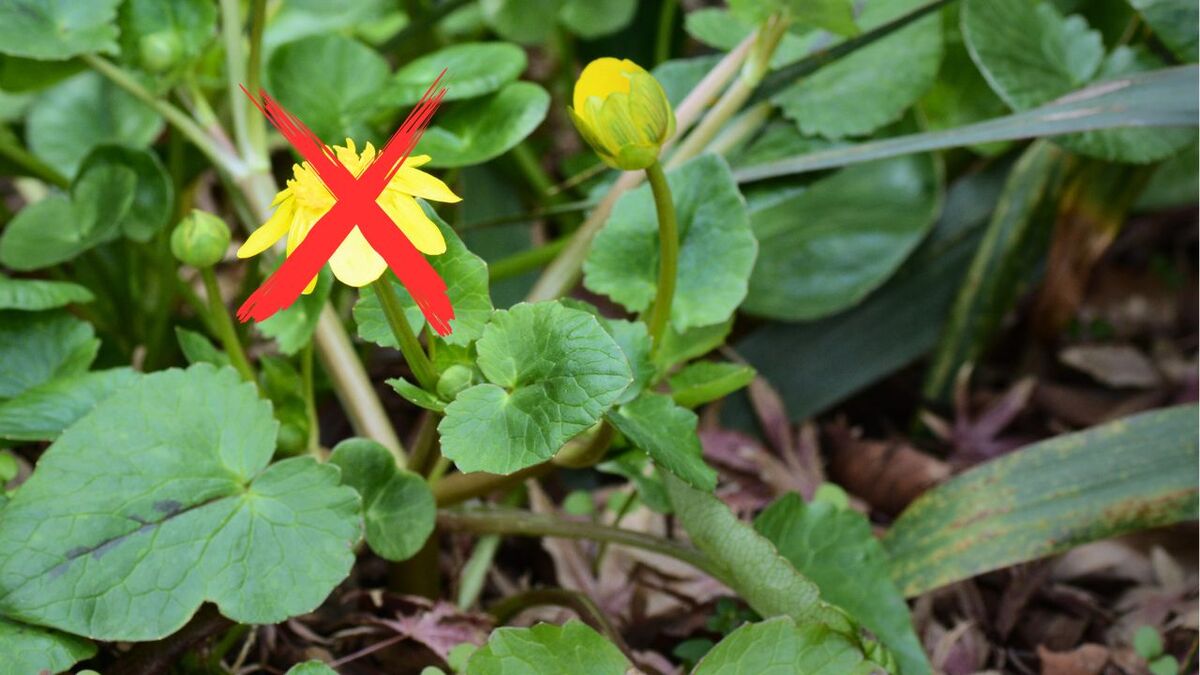
Conclusion: A Little Hero with an Expiration Date
The lesser celandine is a fantastic example of the treasures that grow right in front of our doorstep. An early source of vitamin C, a potential survival snack, and a teacher in terms of nature observation. But as with many things in the wilderness, knowledge is power – and safety.
So, keep your eyes open in spring, enjoy the green carpets, but remember the golden rule:
Harvest only before flowering!
If you keep this in mind, you can surely add this little harbinger of spring to your repertoire of survival skills and knowledge of wild herbs.
Respect nature, take only what you need, and leave no traces – then the forest will continue to gift you with its wonders.


Author of the guide
Martin Gebhardt
Hey, I'm Martin. On my blog, you will learn the basics and numerous details about living in the wild. I think survival, bushcraft and the good life in nature are the keys to happiness. Find me here on Instagram or on YouTube. You can find more about my mission on the About Me page.
Was this guide helpful?
13 people found this guide helpful.
5.00 out of 5 points (13 Ratings)
Comments (0)
This post may contain affiliate links. So if you click on the links and make a purchase, I will receive a small commission at no additional cost to you. Click here, to learn more about it.


